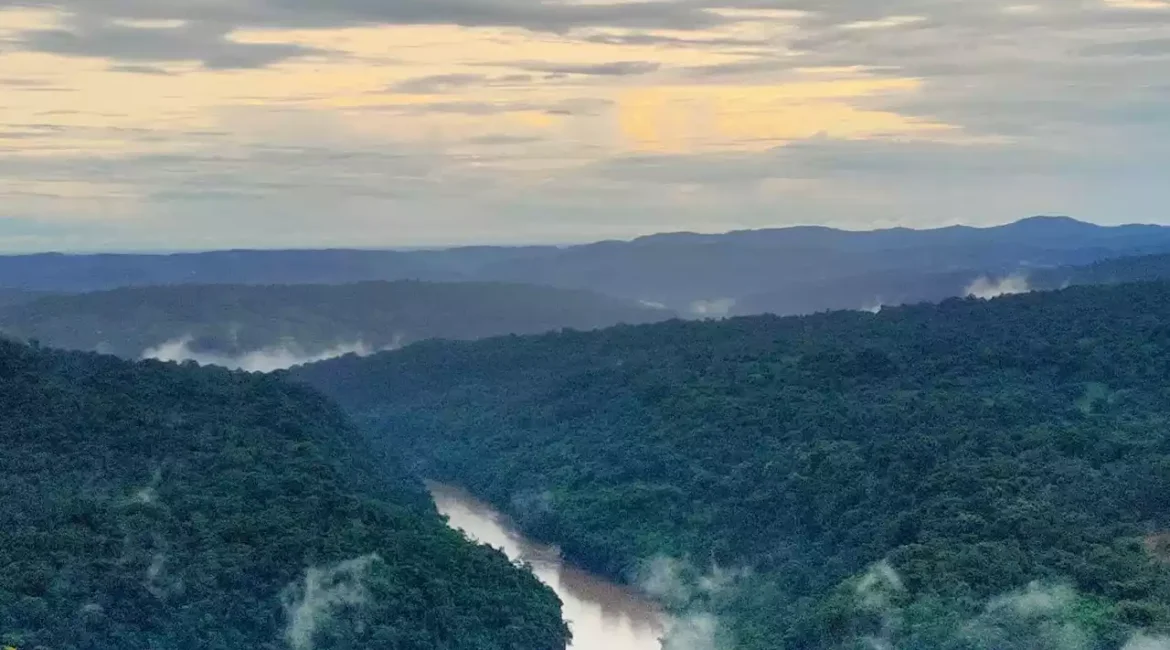Exploring the Rich Tapestry of South Garo Hills District
Introduction
The South Garo Hills district, nestled in the northeastern Indian state of Meghalaya, is a land of breathtaking landscapes, rich cultural heritage, and vibrant communities. This district, characterized by its lush green hills, dense forests, and cascading waterfalls, offers a unique blend of natural beauty and cultural richness. We invite you to delve into the comprehensive overview of South Garo Hills, exploring its demography, culture, geography, cuisines, history, notable poets and authors, and administrative structure.
Demography
South Garo Hills is home to a diverse population primarily comprising the indigenous Garo tribe, who constitute the majority of the district's residents. The Garos, known for their matrilineal society, are complemented by other ethnic communities such as the Khasi, Jaintia, and various smaller tribal groups. The district's population practices a mix of Christianity, traditional Garo faiths, and other religions, reflecting a harmonious coexistence of different cultural and religious backgrounds.
Culture
Traditional Practices and Festivals
The culture of South Garo Hills is deeply rooted in its traditional practices, folklore, and festivals. The Garos celebrate numerous festivals throughout the year, with Wangala being the most prominent. Wangala, also known as the 100 Drums Festival, is a post-harvest celebration where the community thanks the Sun God, Misi Saljong, for a bountiful harvest. The festival is marked by rhythmic drumming, traditional dances, and vibrant attire, showcasing the district's rich cultural heritage.
Music and Dance
Music and dance play an integral role in the cultural life of South Garo Hills. Traditional Garo music is characterized by its use of indigenous instruments such as the 'dama' (drum), 'ade' (flute), and 'rang' (string instrument). Dance forms like 'Doroa' and 'Chambil Mesaa' are performed during festivals and social gatherings, embodying the spirit and traditions of the Garo people.
Geography and Topography
Scenic Landscapes
The geography of South Garo Hills is a captivating blend of hills, valleys, and rivers. The district is part of the Garo Hills range, which is known for its undulating terrain and dense forests. The Nokrek Biosphere Reserve, a UNESCO World Heritage site, is located in this district, offering a sanctuary for various flora and fauna. The Simsang River, the longest river in the Garo Hills, flows through the district, providing a lifeline to its inhabitants and enhancing its natural beauty.
Biodiversity and Ecosystems
South Garo Hills boasts rich biodiversity, with numerous species of plants, animals, and birds thriving in its forests. The district's ecosystems range from tropical evergreen forests to grasslands and wetlands, supporting a wide variety of wildlife, including elephants, leopards, and the rare red panda. The region's commitment to conservation is evident in its protected areas and community-based conservation initiatives.
Cuisines
The culinary heritage of South Garo Hills is a delightful exploration of flavors and traditional cooking methods. The Garo cuisine primarily revolves around rice, fish, meat, and vegetables, often seasoned with indigenous herbs and spices. Dishes like 'Nakham Bitchi' (a dry fish stew), 'Sakin Gata' (steamed rice cake), and 'Pura' (grilled meat) are popular among locals and visitors alike. The use of bamboo shoots, yam, and wild greens in various dishes highlights the district's connection to its natural environment.
History
Ancient Roots and Colonial Influence
The history of South Garo Hills is marked by its ancient roots and colonial encounters. The Garos, believed to have migrated from Tibet, have a long history of settlement in the region. The British colonial period brought significant changes to the district, including the introduction of Christianity and modern education. The Garo community's resistance to colonial rule is exemplified by figures like Togan Sangma, a revered freedom fighter.
Post-Independence Development
Post-independence, South Garo Hills has witnessed considerable development in terms of infrastructure, education, and healthcare. The district continues to evolve, balancing modernization with the preservation of its cultural and natural heritage.
Notable Poets and Authors
South Garo Hills has produced several notable poets and authors who have made significant contributions to Garo literature and beyond. Temsula Ao, a distinguished poet and writer, has garnered acclaim for her works that reflect the life, culture, and struggles of the northeastern tribes. Her poetry and short stories have brought the unique experiences of the Garo people to a wider audience, enriching Indian literature.
Administration
Governance Structure
The administrative framework of South Garo Hills is designed to facilitate effective governance and development. The district is divided into several administrative units, including subdivisions, blocks, and villages. Each unit is governed by elected representatives who work in collaboration with government officials to implement developmental programs and policies.
Development Initiatives
The district administration is focused on various developmental initiatives aimed at improving the quality of life for its residents. Key areas of focus include education, healthcare, infrastructure, and agriculture. Efforts are being made to enhance connectivity, promote sustainable agriculture, and improve access to quality healthcare and education.
Suggested Diagram
Conclusion
South Garo Hills district, with its rich cultural heritage, diverse population, and stunning natural landscapes, offers a unique and enriching experience. The district's history, marked by ancient traditions and colonial influences, its vibrant cultural practices, and its commitment to conservation and development make it a remarkable region. As South Garo Hills continues to evolve, it stands as a testament to the resilience and vibrancy of its people, preserving its heritage while embracing progress.
We invite you to explore and experience the beauty and culture of South Garo Hills, a district that truly embodies the spirit of Meghalaya.
